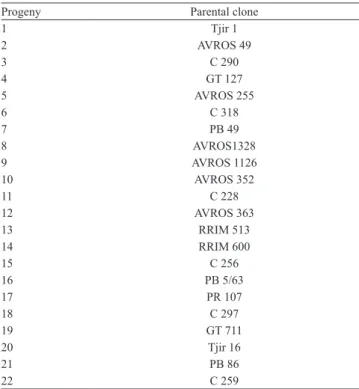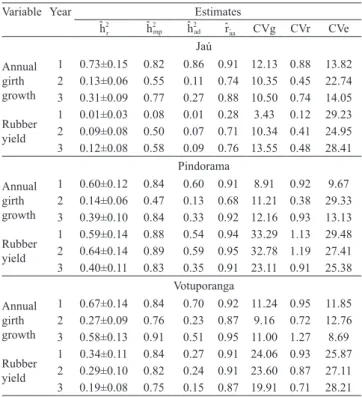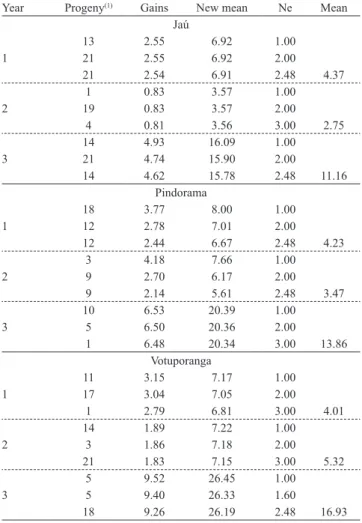Genetic parameters and estimated genetic gains in young rubber tree progenies
Texto
Imagem



Documentos relacionados
Abstract ‒ The objective of this work was to estimate genetic and phenotypic parameters among progenies of the CNA6 population of upland rice ( Oryza sativa ) for grain yield and
The direct selection of the 20 best progenies based on bean yield in each year, consecutive harvests from 2005 to 2008, and based on the mean of the low-yield years (2005 and 2007)
It was concluded that there is genetic variability among selected crambe progenies and there was genetic gain for selection based on grain yield, demonstrating the efficiency
The individual heritabilities calculated for rubber yield, girth growth and total number of latex vessel rings (0.30, 0.63 and 0.29, respectively), associated with high genetic
Overall, results indicate that genetic gains can be achieved through selection of best progenies and best plants within progenies for traits DBH, height and volume,
Means for yield per tree per tapping and yield per hectare per year of the rriM 600 rubber tree clone in different tapping systems in Guararapes city São Paulo State. Means followed
Therefore, both the additive variance and the deviations of dominance contribute to the estimated gains via selection indexes and for the gains expressed by the progenies
The REML/BLUP method was more efficient than the selection indexes and allowed selection of progenies with promising predicted genetic gains for all traits assessed, primarily